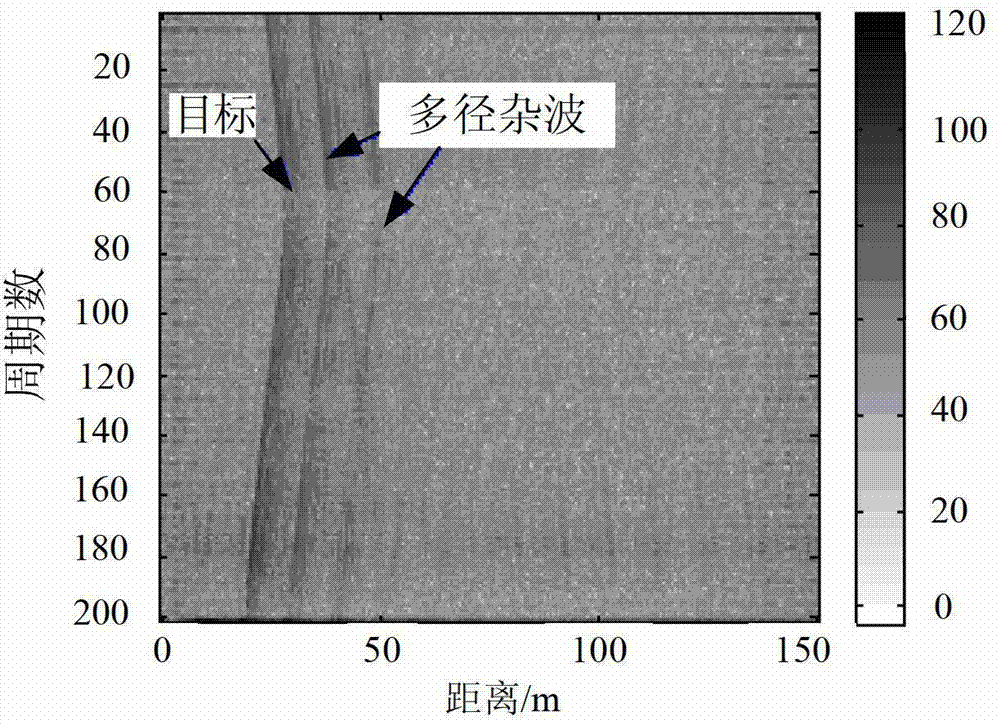Method for suppressing multipath clutters of through-the-wall radar
A technology of through-wall radar and clutter, applied in radio wave measurement systems, instruments, etc., can solve the problems of limited image defocus suppression effect, loss of real target, limited effect, etc., to improve detection performance, suppress influence, and eliminate detection The effect of performance impact
- Summary
- Abstract
- Description
- Claims
- Application Information
AI Technical Summary
Problems solved by technology
Method used
Image
Examples
Embodiment Construction
[0032] A specific embodiment of the present invention is given below in conjunction with a typical experimental example.
[0033] The experimental scene diagram of the detection of moving human targets by through-the-wall radar is as follows: figure 2 As shown, the wall-penetrating radar system uses a single-transmitting and single-receiving dielectric antenna, the distance between the transmitting and receiving antennas is 0.5m, and the transmitting signal is a continuous wave signal with a stepping frequency of 1GHz to 2GHz. The moving human target moves back and forth behind the second wall, and the receiving The antenna collects 200 step-frequency pulse echo signals in total. The walls are ordinary clay brick walls with a thickness of 50cm. The width of each wall is 2m, and the distance between two adjacent walls is 5m.
[0034] Perform MTI average cancellation on the fast and slow time data matrix to suppress fixed clutter, and the output results are as follows image 3A...
PUM
 Login to View More
Login to View More Abstract
Description
Claims
Application Information
 Login to View More
Login to View More - R&D
- Intellectual Property
- Life Sciences
- Materials
- Tech Scout
- Unparalleled Data Quality
- Higher Quality Content
- 60% Fewer Hallucinations
Browse by: Latest US Patents, China's latest patents, Technical Efficacy Thesaurus, Application Domain, Technology Topic, Popular Technical Reports.
© 2025 PatSnap. All rights reserved.Legal|Privacy policy|Modern Slavery Act Transparency Statement|Sitemap|About US| Contact US: help@patsnap.com



